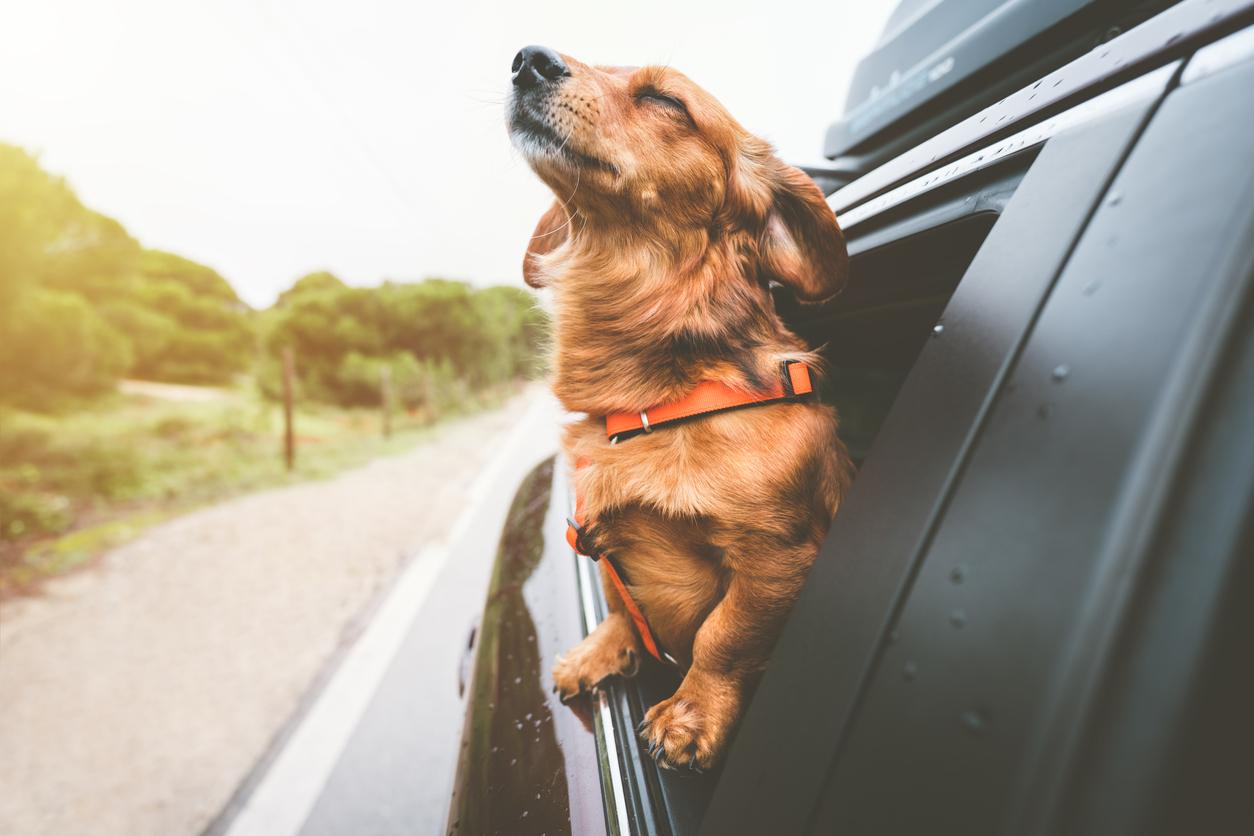Traveling with pets in cars can be a fun experience, but it’s not uncommon for pets to exhibit behaviors that may seem unusual or concerning. Whether your pet is overly excited, anxious, or showing signs of distress, understanding what these behaviors mean can help create a more comfortable and safe environment for both of you. Below, we explore common pet behaviors in the car and what they might indicate.

Common Pet Behaviors in the Car and What They Mean
Whining or BarkingWhining or barking is a common reaction for pets in cars, especially during the first few minutes of a trip. This vocalization often signals discomfort, anxiety, or a desire for attention.
- Possible Meanings: Your pet may be feeling anxious, scared, or overstimulated by the new surroundings and noises. Whining can also be a way to seek comfort from you or express a need to stop for a bathroom break.
- What to Do: Reassure your pet with a calm voice and consider short practice trips to help them get used to car travel gradually. If whining persists, you may need to explore pet anxiety solutions like calming aids or consult your veterinarian.
Pacing or Restlessness
If your pet can’t seem to sit still and is constantly moving around, this pacing can be a sign of discomfort or anxiety.
- Possible Meanings: Restlessness may indicate that your pet is feeling trapped, motion-sick, or unable to find a comfortable position. It can also signal a need to release energy, especially if the trip is longer than your pet is accustomed to.
- What to Do: Make sure your pet has a secure space in the car, like a carrier or seat belt harness, to minimize movement. Regular breaks to let your pet stretch and relieve themselves can also help reduce restlessness.
Panting Excessively
While some panting is normal, especially on warmer days, excessive panting can be a sign that your pet is experiencing stress, heat discomfort, or anxiety.
- Possible Meanings: Panting is often a way for pets to regulate their body temperature, but in cars, it can also indicate anxiety, motion sickness, or overheating.
- What to Do: Make certain that your pet has access to fresh air and water. If feasible, consider using sunshades to maintain a cool environment inside the car. If your pet's panting continues, it might be time to seek pet behavior help from a professional animal behaviorist.
Drooling or Vomiting
Drooling and vomiting are typical signs of motion sickness, especially in pets that are not used to being in a moving vehicle.
- Possible Meanings: Motion disturbs your pet's inner ear balance, directly causing these symptoms. Stress and anxiety can also exacerbate these symptoms.
- What to Do: To help minimize motion sickness, try to keep your pet facing forward in the car. Avoid feeding your pet right before travel, and consider anti-nausea medications or supplements designed for pets if the problem persists.
Excessive Shaking or Trembling
Trembling can be alarming to witness and often points to fear anxiety, or a strong dislike of being in the car.
- Possible Meanings: Your pet might be experiencing nervousness triggered by past negative experiences, unfamiliar surroundings, or loud noises like traffic and engine sounds.
- What to Do: Create a calm environment by playing soothing music, using a comfortable blanket, or placing a favorite toy within reach. Calming products such as anxiety wraps or sprays with calming pheromones can also be beneficial.
Trying to Climb Onto Your Lap or Over Seats
When anxious dogs attempt to move onto your lap or other seats, they often seek comfort or try to reduce their unease by being closer to you.
- Possible Meanings: This behavior indicates insecurity and a desire to be closer to their trusted human. However, it can also be dangerous as it distracts the driver and compromises safety.
- What to Do: Use a pet seat belt or carrier to keep your pet safely in place. Teaching your dog to stay in their designated area during trips can help curb this behavior.
Sitting Quietly and Observing
This is the ideal behavior for pets in cars, where they are calm, observant, and content to watch the world go by.
- Possible Meanings: Your pet experiences a sense of safety, comfort, and relaxation during the car ride. This behavior shows your pet is well-adjusted to traveling in the car.
- What to Do: Continue providing a stable and positive environment for car trips. Reward calm behavior with treats or praise to reinforce their comfort.
Ensure Your Pet Is Comfortable
Understanding your pet's behavior in the car is crucial for creating a safe and enjoyable travel experience. If your pet exhibits signs of anxiety or distress, identifying the root cause can help you create a treatment plan to address the issue effectively. Whether it’s through gradual training, environmental adjustments, or seeking pet behavior help, taking steps to understand your pet's needs will lead to a more positive travel experience for both of you.
Remember, every pet is unique, and finding the right approach to their car travel behavior may take some patience and experimentation. Pet owners can find some useful accessories for dogs and cats that can create a safe and secure environment for every ride they take.



